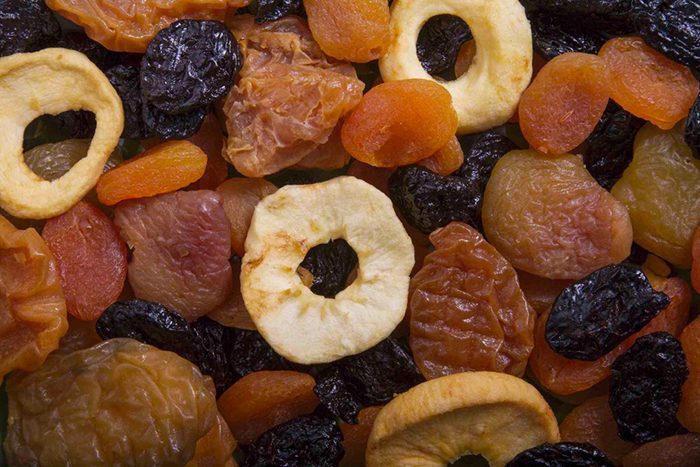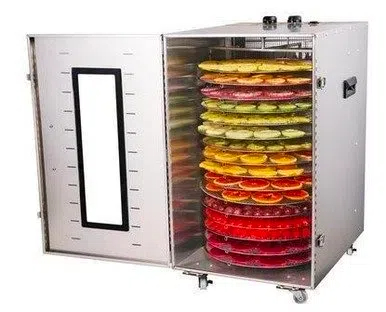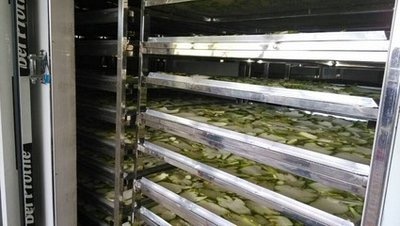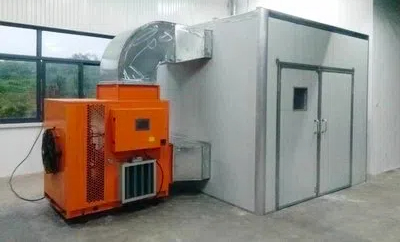
Content Menu
● What is a Food Heat Pump Dryer?
● How Does a Heat Pump Dryer Work?
● Benefits of Using a Heat Pump Dryer
● How Much Does It Cost to Run a Heat Pump Dryer?
● Factors Influencing Running Costs
● Comparison with Other Drying Methods
● Applications of Food Heat Pump Dryers
● Innovations in Heat Pump Technology
● Conclusion
● Frequently Asked Questions
>> 1. What types of foods can be dried using a heat pump dryer?
>> 2. How does a heat pump dryer compare to traditional drying methods?
>> 3. Are there any maintenance requirements for heat pump dryers?
>> 4. Can I use a heat pump dryer for home use?
>> 5. How long does it take to dry food using a heat pump dryer?
Food dehydration is a time-honored preservation technique that extends the shelf life of various food products while retaining their essential nutrients and flavors. In recent years, heat pump dryers have emerged as a revolutionary technology in the food drying industry, offering efficient and effective solutions for both commercial and domestic applications. This article explores the workings, benefits, and costs associated with food heat pump dryers, providing insights into how much it costs to run these machines.

What is a Food Heat Pump Dryer?
A food heat pump dryer utilizes advanced heat pump technology to remove moisture from food products. Unlike traditional drying methods that often rely on high temperatures, heat pump dryers operate at lower temperatures, which helps preserve the flavor, color, and nutritional value of the food. The process involves extracting heat from the environment and using it to evaporate moisture from the food.
Components of a Heat Pump Dryer:
- Heat Pump Unit: This includes a compressor, condenser, evaporator, and refrigerant. The compressor circulates the refrigerant, which absorbs heat from the air in the drying chamber.
- Drying Chamber: This is where the food is placed for drying. It allows for optimal airflow around the products to ensure even drying.
- Control System: It regulates temperature and humidity levels within the chamber for consistent results.
How Does a Heat Pump Dryer Work?
The operation of a heat pump dryer is based on thermodynamic principles. The dryer extracts moisture from food by circulating warm air through it. The process can be broken down into several key steps:
1. Air Intake: Ambient air enters the dryer through an intake system.
2. Heat Exchange: The air passes over the evaporator coils where it absorbs heat from the refrigerant circulating inside. This process cools down the refrigerant while warming up the air.
3. Drying Process: The warm air then flows into the drying chamber where it circulates around the food items, evaporating moisture.
4. Condensation: The moisture-laden air exits the chamber and passes over the condenser coils, where it cools down and condenses back into liquid water, which is then drained away.
5. Recirculation: The cooled air is reheated by passing through the evaporator coils again, creating a continuous cycle that efficiently removes moisture from the food.
Benefits of Using a Heat Pump Dryer
1. Energy Efficiency: Heat pump dryers consume significantly less energy compared to traditional methods. They can reduce energy costs by up to 50%, making them an economical choice for businesses.
2. Lower Operating Temperatures: By drying at lower temperatures, heat pump dryers help maintain the quality of food products, preserving vitamins and minerals that can be lost in high-heat processes.
3. Versatility: These dryers can handle a wide range of food products including fruits, vegetables, meats, and grains.
4. Environmental Impact: The reduced energy consumption translates to a smaller carbon footprint, making heat pump dryers an eco-friendly option.
5. Consistent Quality: The controlled environment within the dryer ensures uniform drying results across batches.
6. Reduced Risk of Spoilage: By removing moisture effectively, heat pump dryers help prevent spoilage and extend shelf life significantly compared to other drying methods.
7. Improved Flavor Retention: Since lower temperatures are used during drying, flavors are better preserved compared to conventional high-temperature drying methods.

How Much Does It Cost to Run a Heat Pump Dryer?
When evaluating the cost of running a heat pump dryer, several factors come into play:
- Energy Consumption: On average, a heat pump dryer uses about 2.16 kWh per full load cycle. Given current electricity rates (approximately 27p per kWh), this translates to an average cost of around 59p per cycle.
- Frequency of Use: The total monthly or yearly cost will depend on how often you use the dryer. For instance, if you run it five times a week, your monthly cost would be approximately £5.80.
- Maintenance Costs: Regular maintenance is crucial for optimal performance but can add to running costs over time.
Factors Influencing Running Costs
1. Electricity Rates: Local electricity prices can significantly impact overall costs.
2. Load Size: Larger loads may require more energy but can also lead to economies of scale in terms of cost per unit dried.
3. Humidity Levels: Higher ambient humidity can increase drying times and energy consumption as the machine works harder to remove moisture.
4. Type of Food Being Dried: Different foods have varying moisture content and require different drying times and temperatures.
5. Operational Efficiency: Well-maintained machines operate more efficiently than those that are neglected; therefore, regular servicing can help reduce overall running costs.
Comparison with Other Drying Methods
To better understand how much does a heat pump dryer cost to run compared to other types of dryers:
| Type of Dryer | Average Energy Consumption (kWh) | Cost per Cycle (£) |
|----------------------|----------------------------------|---------------------|
| Vented Dryer | 5.34 | 1.44 |
| Condenser Dryer | 5.2 | 1.40 |
| Heat Pump Dryer | 2.16 | 0.59 |
As shown in the table above, heat pump dryers are significantly cheaper to run than both vented and condenser dryers.
Applications of Food Heat Pump Dryers
Heat pump dryers are versatile tools in various industries:
- Agriculture: Farmers use them for drying fruits and vegetables post-harvest to prevent spoilage and maintain quality during storage.
- Food Processing: Manufacturers utilize them for creating dehydrated snacks or ingredients like dried herbs and spices that are popular in culinary applications.
- Retail: Grocery stores often use them for producing shelf-stable products that retain flavor and nutrition while extending shelf life.
- Home Use: Increasingly popular among home cooks and small-scale producers who wish to create their own dried fruits or vegetables for personal use or small business ventures.
- Herbal Medicine Production: Used extensively in herbal medicine production where maintaining active compounds is crucial during drying processes.
Innovations in Heat Pump Technology
The advancements in heat pump technology continue to enhance their efficiency and effectiveness in food processing:
1. Smart Controls: Modern heat pump dryers come equipped with smart technology that allows users to monitor and control settings remotely via smartphone applications.
2. Energy Recovery Systems: Some models now feature systems that recover waste heat from operations to further improve energy efficiency.
3. IoT Integration: Integration with IoT devices enables predictive maintenance alerts based on usage patterns, reducing downtime due to unexpected failures.
4. Modular Designs: Newer designs allow for scalability; businesses can start with smaller units and expand as their needs grow without significant upfront investment in larger systems.
Conclusion
Food heat pump dryers represent a modern solution for efficient food preservation through dehydration. Their ability to operate at lower temperatures while maintaining energy efficiency makes them an ideal choice for both small-scale producers and large manufacturers alike. Understanding how much does a heat pump dryer cost to run can help businesses make informed decisions about their equipment investments while contributing positively to sustainability efforts.
By investing in a food heat pump dryer, businesses can not only save on operational costs but also enhance product quality—making it an essential tool in modern food processing industries.

Frequently Asked Questions
1. What types of foods can be dried using a heat pump dryer?
Heat pump dryers can effectively dry fruits, vegetables, meats, fish, grains, and even herbs while preserving their nutrients.
2. How does a heat pump dryer compare to traditional drying methods?
Heat pump dryers use lower temperatures and are more energy-efficient than traditional methods like sun drying or oven drying, resulting in better quality products.
3. Are there any maintenance requirements for heat pump dryers?
Yes, regular cleaning of filters and checking refrigerant levels are essential for maintaining efficiency and prolonging the lifespan of the machine.
4. Can I use a heat pump dryer for home use?
Absolutely! There are smaller models designed specifically for home use that offer similar benefits as commercial units.
5. How long does it take to dry food using a heat pump dryer?
Drying times vary based on the type of food and its moisture content but generally range from several hours to overnight for most products.
By understanding these aspects of food heat pump dryers—how they work, their benefits, operational costs—and by keeping abreast of innovations in this field, businesses can optimize their operations while ensuring high-quality product output that meets consumer demands effectively.












